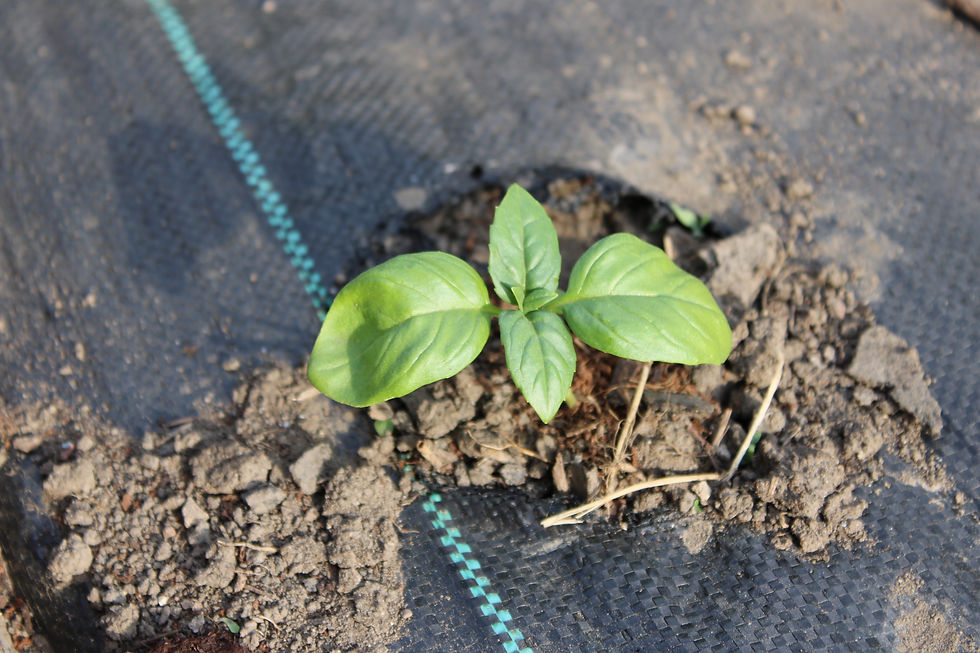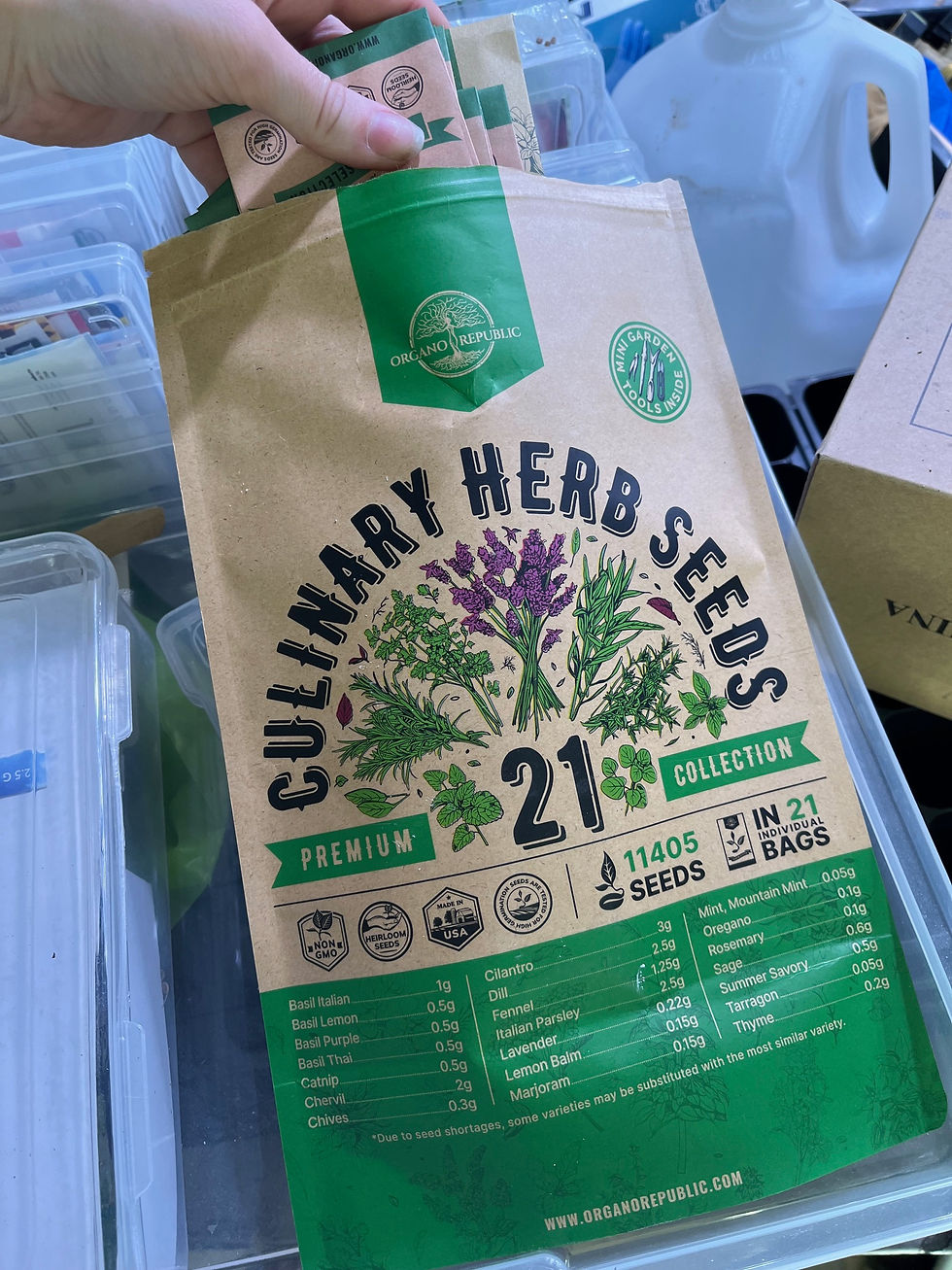9 Tips for Basil Plant Care
- Chelsea Stolte

- Jun 17
- 4 min read
Basil is a beloved herb known for its fresh aroma and vibrant flavor, making it a staple in many kitchens around the world. Whether you enjoy it in pesto, salads, or as a garnish, growing basil at home can be a delightful and rewarding experience. While its cultivation may seem simple, a healthy basil plant requires the right conditions and consistent care. In this guide, you'll find valuable tips to help your basil plant thrive and yield abundant harvests.

Choosing the Right Location
The location you select for your basil plant plays a significant role in its growth and overall health. Basil flourishes in warm conditions and needs 6 to 8 hours of sunlight daily.
For indoor gardening, choose a windowsill with plenty of light. For outdoor planting, find a sunny spot in your garden or on your patio that is shielded from harsh winds. Offering a little shade during the hottest parts of the day can help prevent the leaves from scorching. Research shows that basil grown in proper light conditions can produce up to 40% more leaves than those in insufficient light.
Soil Matters for Basil Plant Care
Soil quality is just as crucial as light exposure. Basil prefers well-draining soil rich in organic matter. A potting mix designed for herbs or a combination of potting soil and compost works well.
Make sure your pot has drainage holes to avoid root rot, which can be detrimental to the plant’s health. Mixing in materials like perlite or vermiculite can enhance soil aeration and drainage. The optimal soil pH for basil falls between 6.0 and 7.0, creating slightly acidic to neutral conditions that foster growth.
Watering Wisely
Watering practices significantly impact basil’s vitality. Basil likes its soil moist, not soggy. A good rule of thumb is to water when the top inch of soil feels dry.
When watering, ensure you saturate the soil until water drains from the container’s bottom—this encourages deep root systems. Avoid watering from above to minimize fungal disease risks on the leaves. It is better to underwater than overwater; basil can typically bounce back from brief dry spells but may struggle with excess moisture.
Pruning for Flourishing Growth
Regular pruning is essential for maintaining a robust basil plant. It keeps your plant looking neat, encourages bushier growth, and prevents premature flowering.
You can prune by simply pinching off stem tips and any developing flowers. This practice redirects the plant's energy into leaf production instead of flowering and seeding. Aim to prune about one-third of the plant at a time and always cut just above a leaf node for best results. Using clean scissors prevents the spread of diseases.
Fertilization Techniques
Basil growing in containers often needs extra nutrients since the soil can become depleted more quickly. Consider a balanced, water-soluble fertilizer every four to six weeks during the growing season.
Avoid high-nitrogen fertilizers, as these may lead to rapid foliage growth but diminish flavor. Instead, look for fertilizers low in nitrogen and higher in potassium, which enhances the herb's aromatic oils. Following the manufacturer's dilution and application guidelines is essential for optimal results.
Pest and Disease Management
While basil is a generally resilient plant, it can be affected by pests like aphids, spider mites, and whiteflies. Regularly inspect the leaves for signs of trouble.
To manage pests effectively, consider introducing beneficial insects such as ladybugs or using organic insecticidal soap when necessary. Ensure sufficient space between plants to improve air circulation and reduce humidity, lowering the risks of diseases like downy mildew. Studies show that plants with adequate spacing have a 25% lower chance of developing fungal infections.
Harvesting the Right Way
Harvesting basil is not only rewarding but also crucial for encouraging further growth. When snipping leaves, use clean, sharp scissors and take care to leave some foliage behind. This allows the plant to continue thriving.
The best time to harvest basil is during the morning after dew evaporates but before heat sets in. This timing maximizes the flavors and aromatic qualities of the leaves. Regular harvesting stimulates new growth and helps prevent flowers from developing too early, ensuring a continuous supply of fresh basil.

Indoor vs. Outdoor Growing

Deciding between growing basil indoors or outdoors may depend on factors like climate, space, and personal preference.
Indoor basil can thrive year-round if given the right light and conditions, making it perfect for consistent access to fresh herbs. Outdoor basil enjoys natural sunlight and the changing seasons, which can enhance its flavor but may expose it to more pests and diseases.
Evaluate your available space and optimal growing conditions before choosing. Keep in mind that growing basil in pots allows for flexibility, making it easy to relocate your plant as needed.
A Path to Success
Caring for a basil plant can be an enriching and enjoyable experience if you have the right knowledge and techniques at your disposal. By paying attention to light, watering habits, soil quality, and pest management, you can nurture your basil effectively.
With consistent care, your basil plants will reward you with fresh, flavorful leaves that elevate your culinary creations. Enjoy the fruitful journey of growing basil!

Thank you for reading about basil plant care!
~DIY With Chelsea







Comments